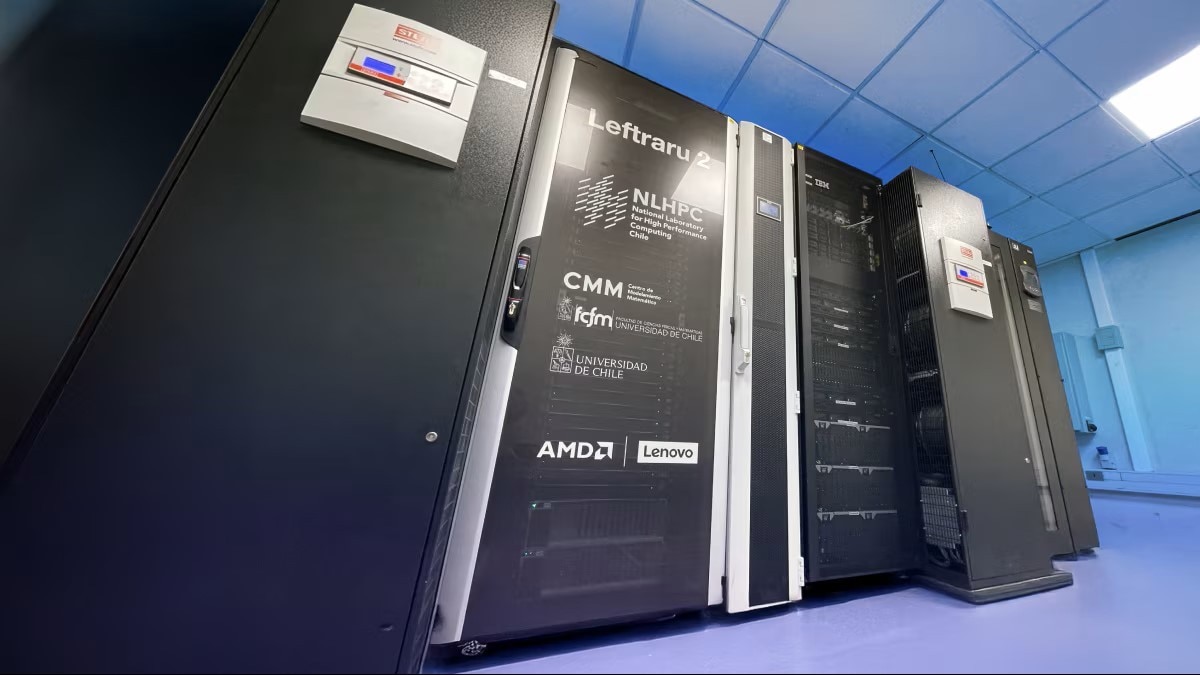From Genome to Galaxy: How AMD Accelerates Academic Research
Aug 11, 2025

Universities across the globe are leveraging HPC solutions from AMD to solve some of the world’s toughest challenges.
By helping them to cost-effectively deploy HPC at scale and accelerate time-to-insight, AMD supports academia’s brightest talents to maximize their expertise and push the boundaries of science further, faster.
Here are just three examples of how AMD technology-based supercomputers are supercharging HPC workloads at the cutting edge of research.
World-class Research Performance at Chile’s NLHPC
Chile’s National Laboratory for HPC (NLHPC), hosted at the University of Chile, serves 500 users from 40 different areas of research, including quantum chemistry, bioinformatics, astronomy, nanotechnology, and physics.
In the words of the lab’s executive head, Ginés Guerrero: “…if you don’t compute you don’t compete”. The AMD EPYC™ CPUs and AMD Instinct™ GPUs deployed in its most recent HPC cluster deliver all the performance NLHPC needs to meet these complex computing requirements, while also meeting the sustainability obligations attached to its public funding.
Ahead of the deployment, NLHPC put 4th Gen AMD EPYC processors and AMD Instinct MI210 GPUs through their paces with a range of tests encompassing at least 100 workloads. Every user reported better performance compared to its previous architecture. It also achieved more than 100 percent of the theoretical maximum performance under the LINPACK benchmark, compared to just 40 percent with its old set up. In fact, with AMD EPYC CPUs, it obtained four times more LINPACK performance at just double the energy.
Read the full story to learn more about how performance gains like these are helping Chile’s NLHPC to accelerate scientific progress.
Revolutionizing Research at Northumbria University
The UK’s Northumbria University is a research-intensive university with a proud heritage of tackling the global challenges of our age.
State-of-the-art research requires state-of-the-art computation, so Northumbria teamed up with Lenovo, Logicalis and AMD to deliver the ‘Higgs cluster,’ its new world-class HPC facility for scientific research.
Its research demands had pushed its previous existing HPC infrastructure to its absolute limit, particularly when it was mapping the spread and evolution of Covid-19 during the pandemic, generating more genome sequencing data than many nation states.
When this research was at its peak, it was processing samples within a 72-hour turnaround, but frequent file-syncing issues meant they’d often have to relaunch jobs, causing delays. By comparison, the new AMD processor-based Higgs cluster can align 42 high depth runs of the human genome in just four hours. That means it can process four times the number of samples in half the time.
Check out the full story to discover how the Higgs cluster marks the beginning of a new chapter for scientific research at Northumbria University.
Driving HPC Excellence at University of Tartu
Users rely on the HPC Center at Estonia’s University of Tartu to run increasingly data-intensive scientific simulations.
When its existing HPC cluster was a few years old, it decided the time was right for a new one that offered more capacity, greater cost-efficiency, and superior ease of management. It opted for a new cluster based on Lenovo ThinkSystem servers powered by dual AMD EPYC™ 7003 Series processors, which boast leadership performance and energy efficiency.
A smooth migration was critical. It had petabytes of data to move to the new infrastructure and its users wouldn’t tolerate any significant interruption to operations. Working with long-time partner Kernel AS on the build, the project and migration ran to plan and on time. Not a single user noticed the cutover to the new HPC cluster.
They have noticed, however, the higher performance and cost-efficiency unlocked by the new cluster, which also ensures the HPC Center stays competitive in business terms.
Read the full story to learn more about how powerful AMD technology is helping the University of Tartu’s HPC Center ensure that Estonia remains a big hitter in scientific research.
Get More Breakthroughs for Your Buck With AMD
AMD EPYC CPUs and AMD Instinct accelerators let academic HPC teams achieve more with every watt, core and dollar.
Whether quadrupling LINPACK performance per joule, halving genomic turnaround times, or migrating petabytes of data without a hiccup, AMD delivers energy-efficient architectures, an open software stack and a broad partner ecosystem that consistently translate into faster insights while helping lower total cost.
For higher-ed institutions under pressure to stretch budgets while still delivering world-class research capabilities, AMD isn’t just another hardware option — it’s a catalyst for turning computational ambition into real-world breakthroughs.
